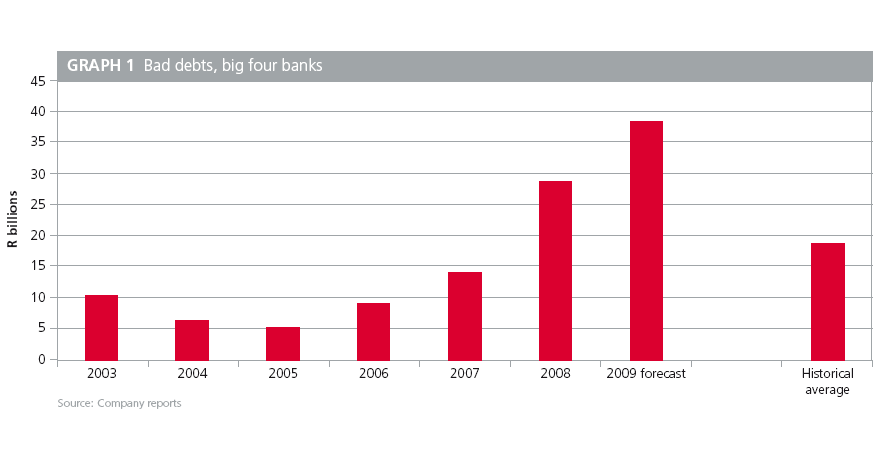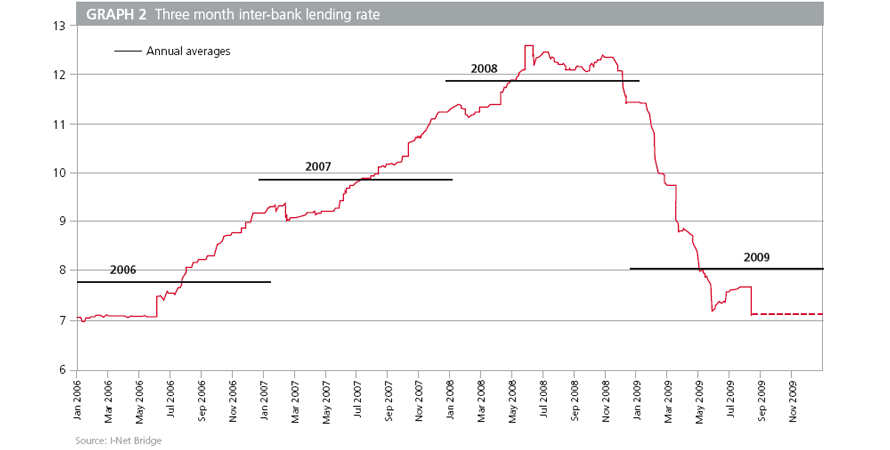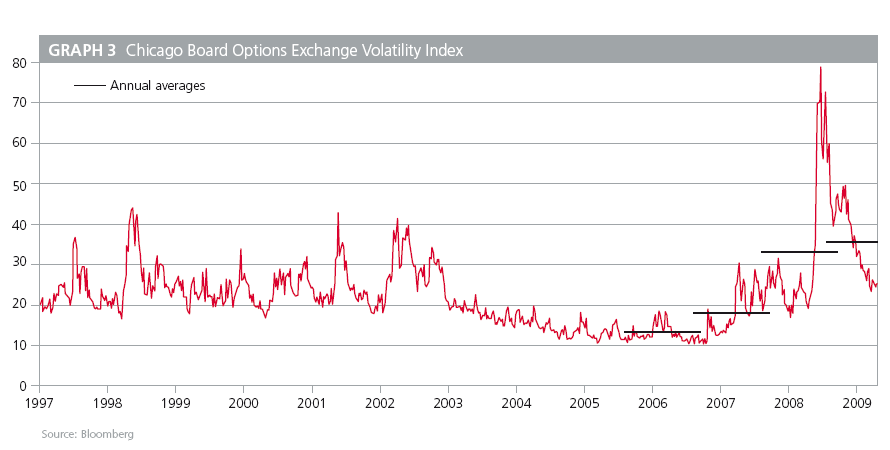Record-high bad debts are currently weighing on the banking sector. Typically, an industry experiencing depressed profits due to cyclical factors is a good hunting ground for bargains, as the market tends to extrapolate the bad news of today into the distant future. However, we have reservations about the banks – we think the future benefits of a lower bad debt charge will probably be offset by other factors. Jacques Plaut elaborates.
When it comes to valuing banks, bad debts are grabbing the headlines. This is understandable: in 2008 the big four South African banks reported that a total of R30bn in loans had gone bad. This is no small sum, compared with the banking profit pool of R40bn, and larger than the total amount that went bad in the three years from 2004 to 2006. This year will be worse still. (Note that all amounts and percentage increases in this article have been adjusted for the effects of inflation).

Bad debts are cyclical. Currently, they are at record highs, and we are confident that the long-term average bad debt charge will be lower than it is today (see Graph 1). However, we think the future benefits of a lower bad debt charge will probably be offset by other factors, such as:
- A shrinking base of 'lazy deposits' and lower returns on these funds because of lower interest rates
- Low growth in advances for some time
- Compared with the last two decades, much less opportunity to improve operational productivity and cut costs, and upward pressure on costs per rand of assets as average loan sizes fall
- Lower trading income
Deposits and the endowment effect
It has often been said that a bank's most valuable asset is its base of lazy deposits. A hundred years ago, when banks were allowed to fail, the business used to be entirely about attracting deposits. Banks competed to be the most conservative – only lending depositors' money to municipalities, large corporations and governments, and never accepting illiquid assets such as real estate or cars as collateral. The economics of lazy deposits are simple: take the R100 that customer X carelessly leaves in his 0.5% savings account, lend it to customer Y at prime, and pocket the difference.
In 2008 lazy deposits were even more profitable than usual, because interest rates were so high: banks could lend out their 'free' money at a comparatively high rate (see Graph 2) to comparatively low risk customers. In 2009 and beyond, this 'endowment' will be considerably less generous, and we expect profits to be impacted negatively.
Not only will banks earn less on their lazy deposits going forward, but over time we expect there will be fewer lazy deposits to lend out. For at least a decade, customers have become increasingly conscientious about where they leave their money, with new savings vehicles, such as money market funds, offering convenient alternatives to no-interest bank accounts. We expect this trend to continue over the long term. Banks will thus have fewer lazy deposits as a proportion of assets in future.

Advances growth
From 1966 to 2000, banks grew their loan books at a rate of 5%. The growth accelerated to 9% in the past decade, and to 12% over the past five years. This was possible thanks to large house price increases, deposits on home loans going from 20% to 0%, and an increase in the general appetite for debt.
These factors have started to reverse, and we think loan growth will be low for several years as a result. In the UK, after the recession and housing slump in the early 90s, Barclays saw its loan book shrink by 17%, with management citing weak demand for loans as one of the reasons. This happened three years after UK house prices started to fall, which means we could still see something similar playing out in South Africa.
IT HAS OFTEN BEEN SAID THAT A BANK'S MOST VALUABLE ASSET IS ITS BASE OF LAZY DEPOSITS
Costs
Banks have become a lot more efficient in the past 20 years. In 1988, each Standard Bank employee was responsible for administering, on average, R4m worth of loans. Today the number (net of inflation adjustment) is R13m – and the story is much the same for the other banks. We suspect that technology has played a part in improving the loan-to-employee ratio: in 1988 there was no internet banking, retailers had no point-of-sale machines, and bank employees spent their time processing cheques. Today much of this work is done by computer, which means employees are free to do more productive things.
But banks are also more efficient today because house prices and corporate profits have doubled since 1988. We expect this means that the average loan size has also doubled, helping the banks. Lower corporate profits and house prices going forward will put pressure on the average loan size and hence the loan-per-employee ratio. We also expect that a retail bank where 10% of customers are not paying their loans – compared with a long-term average closer to 3% – will be more expensive to run per rand of assets, pushing up costs in the medium term.
Trading income
One of the things we like about banks is that they are able to generate revenue almost everywhere that money is flowing. For example, when a corporation wants to move money offshore, or hedge its exposure to the copper price, it does so through a bank. As a rule of thumb, the more volatile the price of the commodity or currency, the more profit the bank makes on the transaction. In 2008, volatilities across all traded instruments were at record highs, and banks made record trading profits. We expect this number to be lower in the future as the level of volatility returns to its long-term average (see Graph 3).
Even if one believes in an imminent recovery in bad debts, there are other reasons why banking profits will be under pressure in the future. But then, the recovery might not be so imminent. The evidence about where we are in the bad debt cycle is mixed. And bad debts have a tendency to go higher than people expect.
